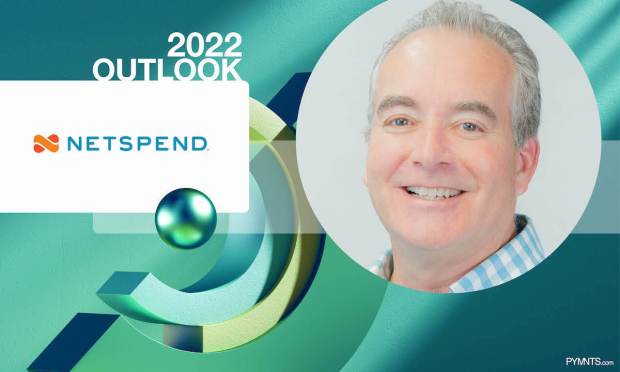How Payments Have Transformed (and Will Continue Transforming) to Meet the Needs of Today’s Digital-First Consumer

Netspend President Kelley Knutson predicts that this year will see a rise in more branded payment ecosystems across a variety of industries as brands look for innovative ways to capture and retain customers. Read his thoughts in the PYMNTS eBook, “Endemic Economics: 32 Payments Execs on the ‘Next Normal’ That Never Happened.”
It goes without saying that the past two and a half years have been transformative for the payments, banking and FinTech industries. While it hasn’t been without trial and error, there is one trend that is here to stay when it comes to retaining customers and building brand loyalty: meeting the needs of today’s digital-first consumer. Consumer behavior has shifted dramatically since the onset of the pandemic. According to a McKinsey & Company study, online purchasing has grown in the double digits across a broad range of categories, including over-the-counter medications, groceries and household items. Another McKinsey study found that convenience is one of the main factors that consumers consider when choosing where to shop. It’s no surprise then that many brands are looking for ways to attract and retain customers, which is why there’s a significant opportunity to create native, in-platform consumer experiences that are convenient, frictionless and embedded. That includes making sure that there is a seamless and nearly invisible way to use a payment app or platform — whether that be to make a purchase, move money, redeem a promotion, get a credit line or loan and much more.
I predict that 2022 will see a rise in more branded payment ecosystems across a variety of industries as brands look for innovative ways to capture and retain customers. While many retailers have been exploring this space for a while, especially since the onset of the pandemic, we’ll continue to see a lot of other industries and vertical markets begin to embed payments and other financial experiences into their offerings. Consumers may not be able to fully articulate why they choose one brand or service over another, but it is clear that they have high expectations for what branded experiences should look and feel like. This is why the opportunities for embedded finance are seemingly endless. For example, money management for older adults, and their care partners, or even a solution that helps people manage their finances to improve or repair their debt profile. There are many products and offerings that are primed to make people’s lives even easier with the addition of an embedded finance solution that they don’t have to think twice about.
Building convenient and easy to-use products will continue to remain a critical component, but not every brand will succeed. Those who want to remain future proof will need to keep a finger on the pulse of financial trends, consumer behavior and the ways people want to experience a brand and transact in a much more open and fluid commerce environment. With the recent steps toward regulating cryptocurrencies in the United States, for example, a successful and future-proof embedded payments strategy will need to be nimble while still ensuring regulatory compliance and applicability.
